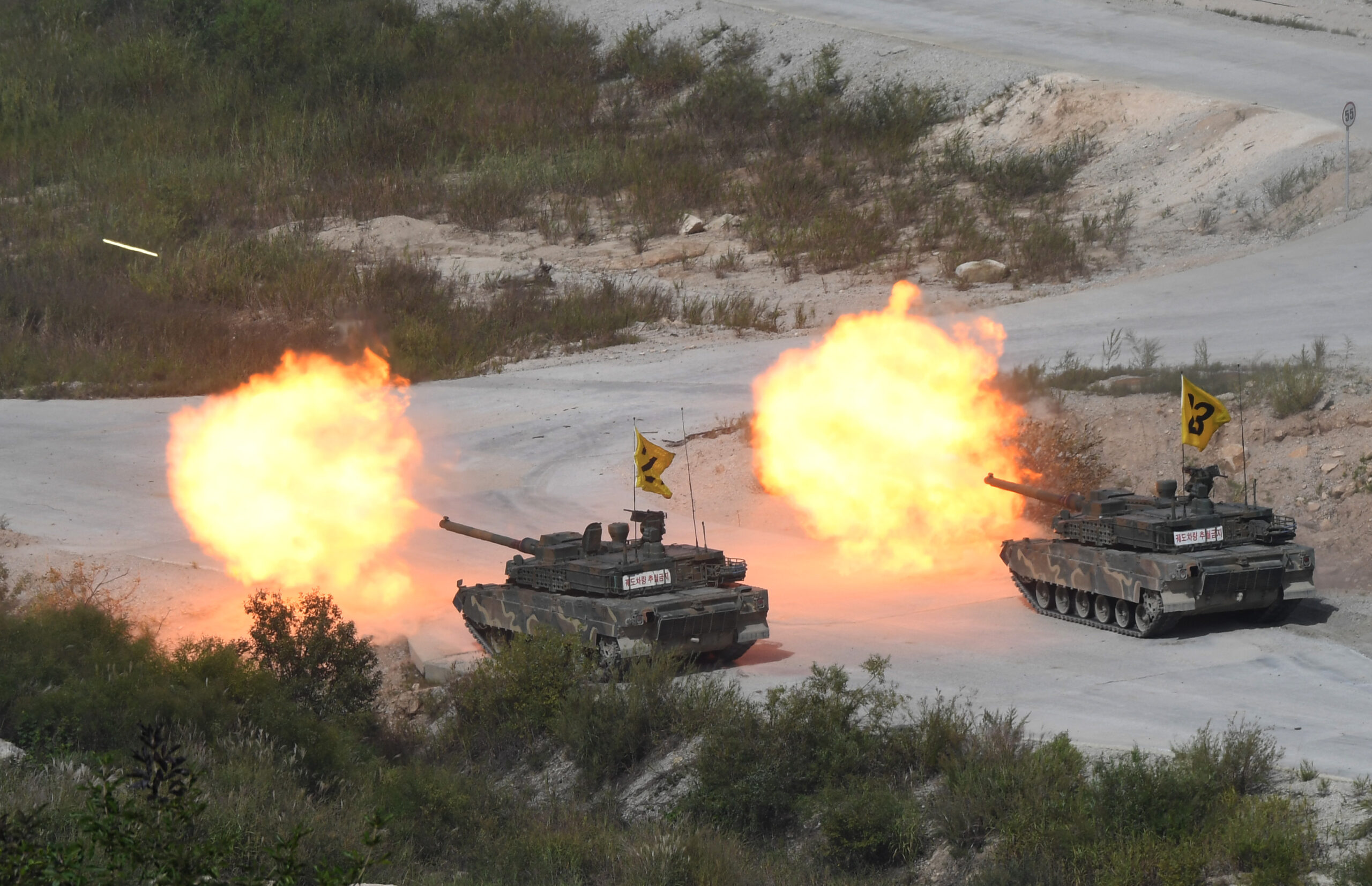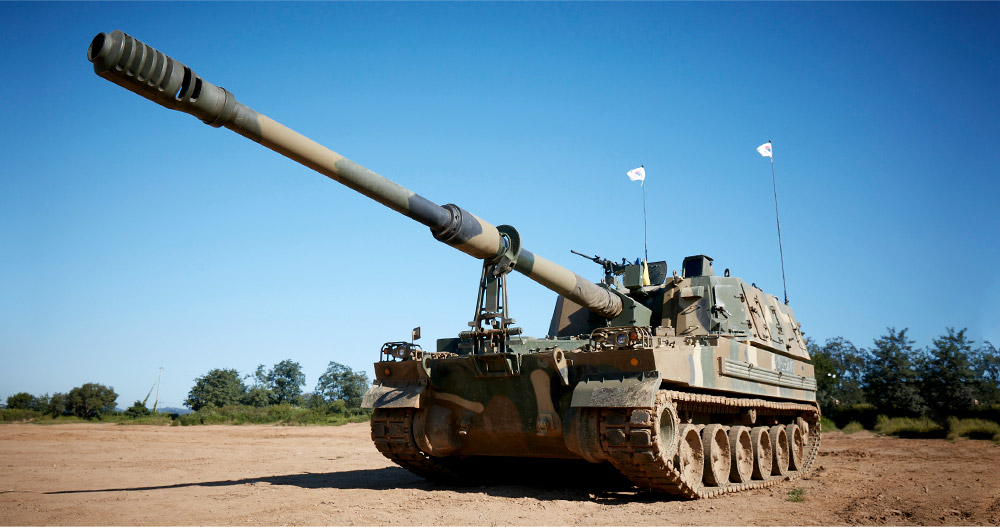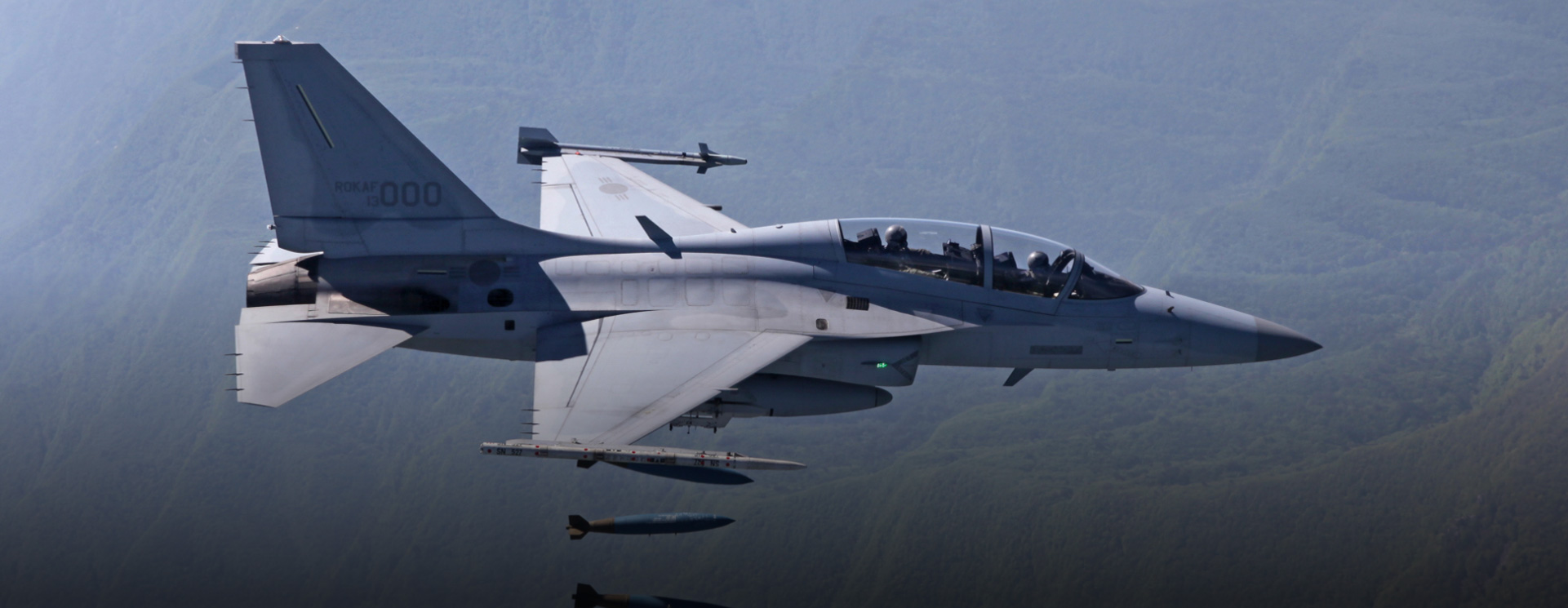In its biggest arms export deal ever, the Republic of Korea (ROK) will sell Poland 180 K2 tanks, 48 FA-50 light fighter jets, and about 670 K9 self-propelled artillery pieces, Chun In-Bum, a retired ROK lieutenant general and former head of that nation’s special operations forces tells The War Zone. The deal, worth upwards of $14.5 billion according to Defense News, comes as Poland looks to replace the arms it has shipped to Ukraine for that nation’s fight against Russia. The deal could prove highly significant for both the ROK and Poland.
“This is the biggest single sale of Korean weapons so far,” Chun told The War Zone Monday morning. “The K9 is probably the best artillery system in the world only rivaled by the German system. The FA-50 is a combat version of the T-50 which has gained a reputation for being the best trainer in the world. The K2 tank in its latest version will be better than anything South Korea has to date.”

NATO member Poland is looking to purchase about 1,000 K2 variant tanks all told, Chun told The War Zone.
The agreement “will significantly increase Poland’s security and the strength of the Polish Army,” Poland’s Deputy Prime Minister and Defense Minister, Mariusz Błaszczak, said in a tweet last Friday announcing the deal. “Fast delivery and industry development are key! We reconciled the often divergent interests of soldiers and the arms industry. It’s a win-win situation for both groups. We’re signing contracts next week!”
In addition to backfilling the supply of weapons sent to Ukraine, the deal will also deliver a message to Russia.
“Among the European countries [and] NATO, Poland will have the strongest land forces,” Blaszszak told Polish media. The Polish armed forces “must be so numerous and so strong that its mere existence will scare the aggressor.”
Because of the relatively short turnaround of the deal, production will be split between Korea and Poland, Blaszczak told reporters in Warsaw last week.
K2 Black Panther
K2 Black Panther tanks will join Poland’s growing arsenal of foreign-produced armor designed to replace the T-72 and PT-91 tanks it sent to Ukraine. The U.S. has agreed to sell Poland 366 Abrams M1 main battle tanks, a figure that includes 250 M1A2 SEPv3 Abrams tanks, the most updated variants.
Blaszczak told the Polish media outlet wPolityce.pl that the K2s will fit well into the Polish arsenal.
“It is compatible with, or even identical to, the American equipment, constructed with the participation of US companies,” he said of the K2.
The ROK K2 Black Panther “is one of the most modern main battle tanks in production,” having first rolled off the assembly lines in 2013, according to Czech Army and Defence Magazine. The main weapon for the 55-ton Black Panther, which cost about $8.8 million a piece, “is a 120mm Rheinmetall L55 cannon with a smooth bore barrel, which is manufactured under license in South Korea.”
The K-2 can also use KSTAM (Korean Smart Top-Attack Munition) anti-tank missiles with “shoot and forget” technology. Its secondary armaments include 12.7mm and 7.62 mm machine guns.

It is powered by a 12-cylinder 1,500-hp Diesel engine, allowing it to travel at speeds of up to about 43 mph. The commander and shooter “have the use of modernized display systems from K1 series tanks.” The safety of the crew is ensured by layered armor, with the possibility of adding reactive armor, either explosive or non-explosive.
There is a missile approach warning system (MAWS) installed on the turret (which warns about approaching guided missiles) together with radar jamming equipment, a radar warning receiver (RWR,) and laser warning receivers (LWR).
“The chances of survival of the crew are further increased by the on-board fire suppression system.”
In addition to the K2, the ROK is also working to sell Poland about 820 K2PL tanks, “adapted to the Polish requirements of K2 tanks, the deliveries of which are to start in 2026,” according to DziennikZbrojny.pl, a Polish defense-oriented website. The website based its analysis on a July 24 YouTube interview given by Lt. Col. Krzysztof Płatek, spokesman for Poland’s Armaments Agency, that nation’s new procurement directorate.
“These tanks are to be produced in a new factory built in Poland and partly in South Korea. The vehicles are to be characterized by: reinforced armor, [an] omnidirectional observation system, [and a] hard-kill ASOP (KAPS) active defense system.”
The two nations are also working toward building a jointly made K3PL, which is “a new Polish-Korean tank of the future, developed on the basis of the K2PL tank, which will be produced in Poland and South Korea,” DzeinnikZbojny.pl reported.
K9 Thunder Self-Propelled Howitzer
The K9 Thunder is a tracked 155mm/52-caliber self-propelled artillery piece that has a range of up to about 30 miles depending on its munitions, according to its manufacturer, Hanwha Defense, which describes the following capabilities:
The K9 is capable of firing a burst rate of “three rounds in less than 15 seconds” and a maximum rate of fire “of six to eight rounds per minute for three minutes.” The sustained rate of fire is from “two to three rounds a minute for one hour.”
The K9 Thunder “protects the internal crew and onboard equipment against 155mm shell fragments, 14.5mm armor-piercing shells, and anti-personnel mines.”
In nuclear, biological, or chemical (NBC) warfare situations, “survivability is guaranteed with the on-board air purification system and gas masks for the crew.”

There are several variants of this weapon.
The K9A1 was improved “to operate automatic fire control units better at night,” according to Hanwha Defense. In addition, improvements were made to the driver night vision periscopes and auxiliary power units. “The K9A1 self-propelled howitzer boasts a long shooting range, high-velocity firing, and quick day/night displacement for firing support and direct engagement. It also has excellent maneuverability and ability to concentrate its firepower on select targets.”
The K9A2 “will be an upgrade of the existing 155mm/52-caliber K9A1 Self-Propelled Howitzer, as it is to feature improved lethality, mobility, and survivability,” the company said in a March media release when announcing that it was working with Lockheed Martin to develop the system for the UK.
Poland plans to acquire K9s in two tranches, with the potential for a third one in the future, according to DziennikZbrojny.pl.
The first will consist of 48 K9A1 variants. Of those, 18 will be delivered from South Korea this year and the remainder next year. This is to backfill the AHS Krab howitzers delivered to Ukraine.
The K9A1 variants Poland will purchase from the ROK will initially be retrofitted with the TOPAZ Integrated Combat Management System.
TOPAZ features “advanced software to be integrated with various strike systems, enabling…precise ballistic calculations,” according to its manufacturer, the WB Group.
The K9A1s will be replaced by the K9PL version, starting sometime around 2026, according to DziennikZbrojny.pl.
That tranche will feature 624 K9PL versions of the K9A2, adapted for Poland and equipped with the TOPAZ system. Deliveries of this version are expected to start in 2024 and will be manufactured in South Korea. Starting in 2026, the K9PL production is to begin in a new factory built in Poland. At that time, deliveries will be made from both the Polish and Korean production lines.
The ROK and Poland will also develop a new variant, called the K9PLA3, according to DziennikZbrojny.pl. It will be produced in both countries.
FA-50 Fighting Eagle Light Fighter-Trainer
The FA-50 Fighting Eagle is a two-passenger, single-engine (GE-F404) light fighter based on Korea Aerospace Industries (KAI) T-50 trainer.
The FA-50 was upgraded with a tactical data link, an integral self-protection suite, and the ability to employ precision-guided munitions. The FA-50 – which has a maximum speed of Mach 1.5, and an armament system that includes a 20mm three-barreled gun, AIM-9 sidewinder missiles, and the Joint Direct Attack Munition, or JDAM – has been deployed and operated in the Republic of Korea Air Force (ROKAF) since 2013.
The majority of the 48 aircraft being shipped to Poland will be a version similar to the FA-50 Block 20 version being developed by KAI, with AESA radars, Sniper targeting pods, AIM-9X Sidewinder air-to-air missiles, and the Link 16 data-link system, according to DziennikZborjny.pl.

In the future, the publication reported, it may be possible to arm this version of the FA-50 with a medium-range air-to-air missile like the AIM-120 Advanced Medium-Range Air-to-Air Missile, or AMRAAM.
All deliveries are planned to be completed “in 2023, with 12 aircraft in the current FA-50 Block 10 version being delivered first, followed by 36 aircraft in the [Block 20-like] FA-50PL version.”
Upon the completion of deliveries, the first 12 aircraft are to be upgraded to the FA-50PL version.
“It is expected that a training center with simulators and a service center will be built in Poland by around 2026,” according to the publication. “Before deciding on the order, Polish pilots were already flying FA-50 aircraft in South Korea.”
Płatek, the spokesman for the Polish Armaments Agency, “also mentioned that the Polish Ministry of Defense is also interested in the possibility of acquiring the new generation KF-21 Boramae multi-role combat aircraft” in the future, according to DziennikZborjny.pl.
That aircraft just made its maiden flight last week, as we detailed here.
The FA-50 is a fairly logical choice for Poland, as they operate the Block 52+ F-16C/Ds and will be getting the F-35A, as well. FA-50s are remarkably capable in the configuration Poland will be getting them in, which includes an AESA radar. They will be able to execute precision attack missions and air policing duties, as well as work as advanced trainers and even adversaries for Poland’s rapidly evolving advanced air combat fleet. They can do these things at a fraction of the cost of, say, an F-35A, and preserve precious airframe life on more advanced types. It isn’t clear at this time what aircraft they will replace, but Poland needs to displace its aging Soviet-era MiG-29 Fulcrum and Su-22 Fitter fleet. The FA-50 seems like a very cost-effective but capable way of doing so.
There are still a lot of details to be worked out between the ROK and Poland, but the deal stands to get Poland the modern weapons it needs fast and work as a major boon for South Korea’s defense sector.
Contact the author: howard@thewarzone.com
